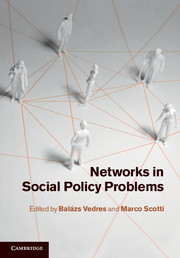Book contents
- Frontmatter
- Contents
- List of contributors
- Acknowledgements
- 1 Introduction
- Part I Information, collaboration, innovation: the creative power of networks
- Part II Influence, capture, corruption: networks perspectives on policy institutions
- 6 Modes of coordination of collective action: what actors in policy-making?
- 7 Why skewed distributions of pay for executives is the cause of much grief: puzzles and few answers (so far)
- 8 Networks of institutional capture: a case of business in the State apparatus
- 9 The social and institutional structure of corruption: some typical network configurations of corruption transactions in Hungary
- Part III Crisis, extinction, world system change: network dynamics on a large scale
- References
- Index
7 - Why skewed distributions of pay for executives is the cause of much grief: puzzles and few answers (so far)
from Part II - Influence, capture, corruption: networks perspectives on policy institutions
Published online by Cambridge University Press: 05 September 2012
- Frontmatter
- Contents
- List of contributors
- Acknowledgements
- 1 Introduction
- Part I Information, collaboration, innovation: the creative power of networks
- Part II Influence, capture, corruption: networks perspectives on policy institutions
- 6 Modes of coordination of collective action: what actors in policy-making?
- 7 Why skewed distributions of pay for executives is the cause of much grief: puzzles and few answers (so far)
- 8 Networks of institutional capture: a case of business in the State apparatus
- 9 The social and institutional structure of corruption: some typical network configurations of corruption transactions in Hungary
- Part III Crisis, extinction, world system change: network dynamics on a large scale
- References
- Index
Summary
One of the most important questions for public policy that arose from the financial crisis that began in the United States in 2007 is the effect of executive pay on risk taking. The regulatory implications of this claim have been significant. Federal Reserve Chairman Ben Bernanke described the Fed's efforts to develop rules that will “ask or tell banks to structure their compensation, not just at the top but down much further, in a way that is consistent with safety and soundness – which means that payments, bonuses and so on should be tied to performance and should not induce excessive risk” (Wall Street Journal, 5/13/2009). The Dodd-Frank Wall Street and Consumer Finance Act, passed in July 2010, included several provisions to give shareholders a say over pay, and to strengthen the risk and compensation practices of boards of directors. Sheila Bair, chairman of the FDIC, said: “This proposed rule will help address a key safety and soundness issue which contributed to the recent financial crisis: that poorly designed compensation structures can misalign incentives and induce excessive risk-taking within financial organizations.”
The justification for imposing risk on executives (and workers in general) derives from the wide acceptance of the principal-agent model that informs law and economics and managerial practice. The standard principal-agent model recognizes that the effort of the executive (the agent) is not observable by owners (the principal), and thus compensation contracts use incentive schemes to motivate executives who otherwise would exert less than the contracted effort.
Information
- Type
- Chapter
- Information
- Networks in Social Policy Problems , pp. 124 - 142Publisher: Cambridge University PressPrint publication year: 2012
